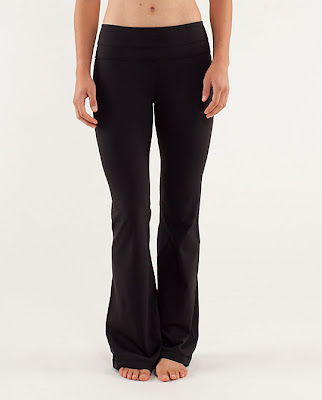Seeya
Well eventually I knew there would come a time I had to do some real work maintaining this blog, I couldn't get by on smart arse comments and poor sub-editing forever - I just needed a hook to get me going.
It came in the most depressing way, as I was informed several people I knew were sitting on a second property - a second empty property - a second empty property they'd renovated and hoped to flip. 'Hoped' being the operative word.
As previously mentioned the, details are too depressing for words and if I went into them I'd probably turn all Glenn Beck as I start blubbering at the prospect of the financial Armageddon these people face.
Putting two and two together I quickly find the properties listed online, pictured dead empty - then something clicks. If you're someone like me - with too much time on his hands and a mild case of undiagnosed asperger's - you notice a few patterns and being the relentless and lifeless fool I am, I decided to follow them.
The result is the following graph:
It shows the percentages of unoccupied and rental properties currently for sale on the North-West coast of Tasmania. It works west to east, Smithton area as the furthest west and Latrobe the furthest east. Burnie and Devonport are the major population centres.
To the veracity of the figures, if a property is listed as a rental - I'm counting it as a rental. I suspect the Devonport figures are not entirely accurate and should be higher, many houses had indicators they'd be rentals, but if it's not explicitly stated I couldn't count them. The other noteworthy point about the Devonport figures, they bleed into the Latrobe figures. East Devonport, a lower priced area and more likely to targeted by investors was counted with Latrobe.
On the unoccupied dwellings, if a dwelling is pictured empty, just as the aforementioned houses of the flippers were empty, it's saying something - it's currently empty. And if the house hasn't been sold within the last few years, clearly there's no picture recycling going on - the house is empty.
Firstly the consistency of the unoccupied figures is interesting - they didn't exceed a 5% difference across eight markets. With 15-20% being the range of unoccupied houses for sale. From my observation, the unoccupied houses counted basically fell into two categories - low priced potential rental/first home or newly built spec homes.
This flies in the face of the Tasmanian HIA's year on year bleating that Tasmania is 200 homes short a year. I've just found over 250 in one region. Significantly, many were new dwellings, unoccupied, never lived in and waiting for an owner.
If you're in the market for a new house or unit on the north-west coast of Tasmania, you won't have any trouble finding one.
Could it be.... dare I utter the word... oversupply?
Which is extremely concerning - how long can builders hold onto these dwellings before their financial stability is threatened?
The others? Be they rentals without tenants or be they flips, someone, like those builders, is incurring holding costs - without any income at a time when equity is evaporating.
To the rentals, the most obvious point of note is the spike in Burnie rentals for sale. Those figures are entirely accurate and clearly Burnie agents aren't shy in advertising the current use of the property - if you're a buyer, you're a buyer to them. To me the chart looks entirely satisfactory to that point. The Smithton area at the west, is a smaller catchment and probably less attractive to investors. Wynyard and Burnie are 15 minutes away from each other by car, so Wynyard is a perfectly viable alternative to an investor, so clearly flows into Burnie.
So why the Burnie spike? In the early 2000's, rumours long circulated that mainland investors were coming into the north-west, hoovering up cheap properties and renting them out. By cheap, I mean $50k-80k. Now in the last year Burnie has lost over 200 manufacturing jobs, not to mention another around 350 between mining and processing in nearby areas (conceivably a number of these people actually lived in Burnie). And now a black cloud hangs over more jobs at a Burnie cheese factory, as the owner conducts a review.
If you're an investor and you've ridden an investment property from sub $80,000, to over $250,000 in under 10 years, you're pretty lucky - especially when growth like that was completely unheard of in Tasmania. Then what happens when jobs around that property are beginning to disappear? You're probably going to take your luck and jump, like the rat off the sinking ship.
Three investment properties hitting the market, in one day, with the same agent, in the same area - that's no coincidence, that's someone dropping their load.
The rats, aided by cheap credit and tax rorts, floated this boat and everyone else, from the builders, to the flippers, to the first home buyers, thought it was safe and jumped on board. But now there's a leak - jobs are disappearing and as the rats now jump off, they'll probably sink the ship. Unfortunately, everyone else had no idea what kind of market they were operating in. The builders especially, but how could they? This is their own association talking:
While the Tasmanian economy continues to perform reasonably well there are increasing pressures on housing stock as underlying demand continues to exceed the supply of new residential dwellings.
As a state we are building at least 200 new dwellings less than what is required per annum.
Quoting it here saves me searching for it later on Wayback.
It came in the most depressing way, as I was informed several people I knew were sitting on a second property - a second empty property - a second empty property they'd renovated and hoped to flip. 'Hoped' being the operative word.
As previously mentioned the, details are too depressing for words and if I went into them I'd probably turn all Glenn Beck as I start blubbering at the prospect of the financial Armageddon these people face.
Putting two and two together I quickly find the properties listed online, pictured dead empty - then something clicks. If you're someone like me - with too much time on his hands and a mild case of undiagnosed asperger's - you notice a few patterns and being the relentless and lifeless fool I am, I decided to follow them.
The result is the following graph:
It shows the percentages of unoccupied and rental properties currently for sale on the North-West coast of Tasmania. It works west to east, Smithton area as the furthest west and Latrobe the furthest east. Burnie and Devonport are the major population centres.
To the veracity of the figures, if a property is listed as a rental - I'm counting it as a rental. I suspect the Devonport figures are not entirely accurate and should be higher, many houses had indicators they'd be rentals, but if it's not explicitly stated I couldn't count them. The other noteworthy point about the Devonport figures, they bleed into the Latrobe figures. East Devonport, a lower priced area and more likely to targeted by investors was counted with Latrobe.
On the unoccupied dwellings, if a dwelling is pictured empty, just as the aforementioned houses of the flippers were empty, it's saying something - it's currently empty. And if the house hasn't been sold within the last few years, clearly there's no picture recycling going on - the house is empty.
Firstly the consistency of the unoccupied figures is interesting - they didn't exceed a 5% difference across eight markets. With 15-20% being the range of unoccupied houses for sale. From my observation, the unoccupied houses counted basically fell into two categories - low priced potential rental/first home or newly built spec homes.
This flies in the face of the Tasmanian HIA's year on year bleating that Tasmania is 200 homes short a year. I've just found over 250 in one region. Significantly, many were new dwellings, unoccupied, never lived in and waiting for an owner.
If you're in the market for a new house or unit on the north-west coast of Tasmania, you won't have any trouble finding one.
Could it be.... dare I utter the word... oversupply?
Which is extremely concerning - how long can builders hold onto these dwellings before their financial stability is threatened?
The others? Be they rentals without tenants or be they flips, someone, like those builders, is incurring holding costs - without any income at a time when equity is evaporating.
To the rentals, the most obvious point of note is the spike in Burnie rentals for sale. Those figures are entirely accurate and clearly Burnie agents aren't shy in advertising the current use of the property - if you're a buyer, you're a buyer to them. To me the chart looks entirely satisfactory to that point. The Smithton area at the west, is a smaller catchment and probably less attractive to investors. Wynyard and Burnie are 15 minutes away from each other by car, so Wynyard is a perfectly viable alternative to an investor, so clearly flows into Burnie.
So why the Burnie spike? In the early 2000's, rumours long circulated that mainland investors were coming into the north-west, hoovering up cheap properties and renting them out. By cheap, I mean $50k-80k. Now in the last year Burnie has lost over 200 manufacturing jobs, not to mention another around 350 between mining and processing in nearby areas (conceivably a number of these people actually lived in Burnie). And now a black cloud hangs over more jobs at a Burnie cheese factory, as the owner conducts a review.
If you're an investor and you've ridden an investment property from sub $80,000, to over $250,000 in under 10 years, you're pretty lucky - especially when growth like that was completely unheard of in Tasmania. Then what happens when jobs around that property are beginning to disappear? You're probably going to take your luck and jump, like the rat off the sinking ship.
Three investment properties hitting the market, in one day, with the same agent, in the same area - that's no coincidence, that's someone dropping their load.
The rats, aided by cheap credit and tax rorts, floated this boat and everyone else, from the builders, to the flippers, to the first home buyers, thought it was safe and jumped on board. But now there's a leak - jobs are disappearing and as the rats now jump off, they'll probably sink the ship. Unfortunately, everyone else had no idea what kind of market they were operating in. The builders especially, but how could they? This is their own association talking:
While the Tasmanian economy continues to perform reasonably well there are increasing pressures on housing stock as underlying demand continues to exceed the supply of new residential dwellings.
As a state we are building at least 200 new dwellings less than what is required per annum.
Quoting it here saves me searching for it later on Wayback.




Comments
Post a Comment